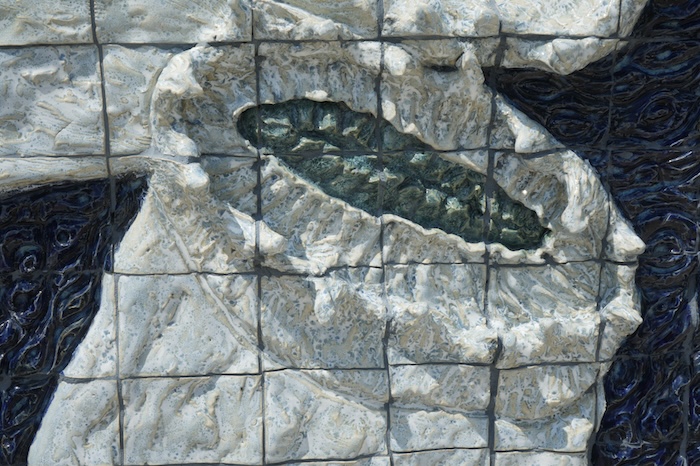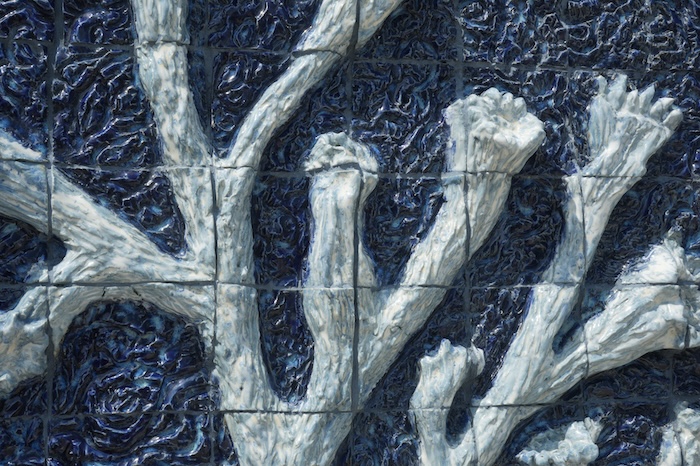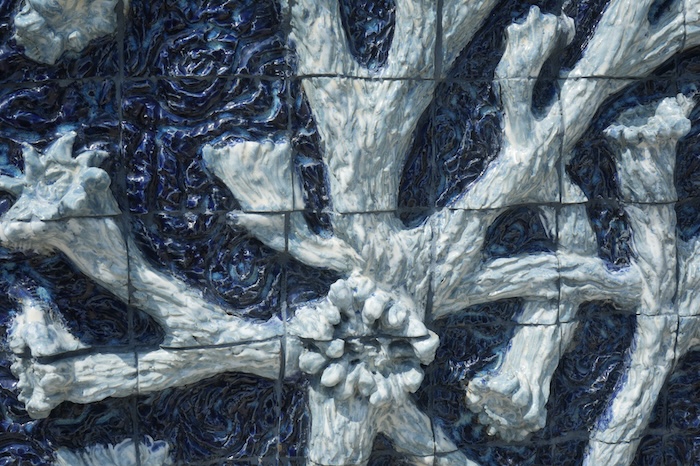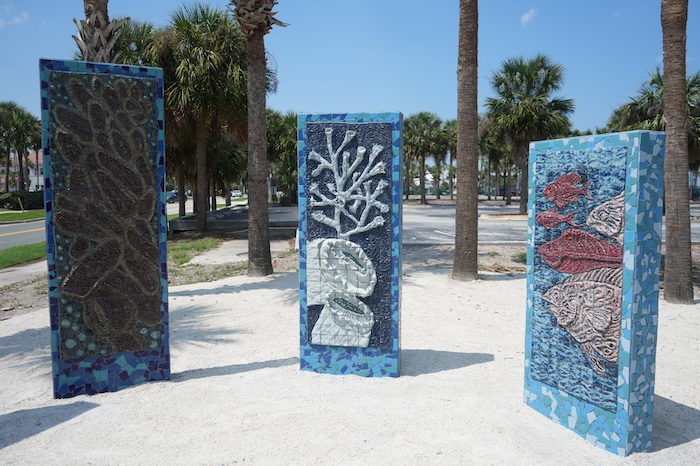Home » 2024 » Water Columns » Blake Plateau | Lophelia Corals
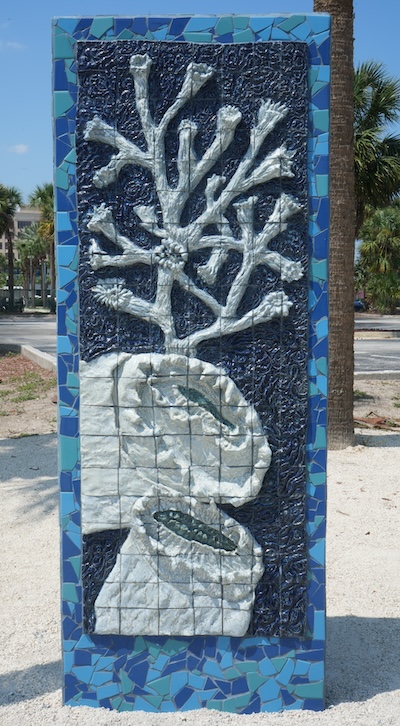
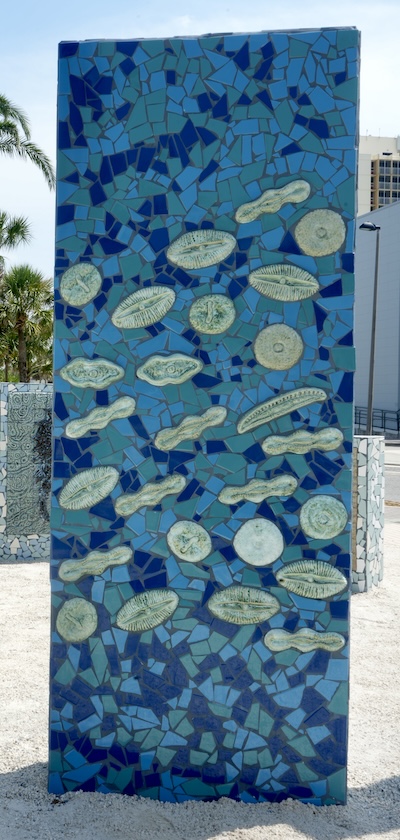
Xavier Cortada, “Blake Plateau | Lophelia Corals,” 84″ x 32″ x 8″, hand-carved, hand-glazed ceramic tile on concrete, 2024
(Water Columns series in Jacksonville Beach, FL)
Lophelia Corals
One of seven ceramic tile works in the “Water Columns” installation, this piece represents the Blake Plateau off Jacksonville Beach. It features Lophelia corals from the world’s largest deep-sea coral habitat, underscoring the need to protect these fragile ecosystems from climate impacts.
Story
Just past the outer continental shelf lies the world’s largest continuous deep-sea coral reef, fittingly called the Million Mounds. This 200-mile-long coral habitat was recently discovered and sits in the Blake Plateau, a biodiversity hotspot that runs from Florida to North Carolina.
While tropical coral reefs, like those in the Florida Keys, live in warmer waters and only turn white if they are dying, deep-sea coral live in cold, dark water and are white when healthy. Much of the coral found in the Blake Plateau is called Lophelia pertusa, but there are more than 200 species of identified coral in the region. Some coral forests grow to be up to 600 ft high!
These coral depend on the Gulf Stream to churn the waters above them for food. This movement funnels plankton from the surface to the deep waters, feeding the corals below. Lophelia pertusa provides habitat for a multitude of fish and other marine species, including some of the same fish that recreational and commercial fishers are interested in catching.
Protecting this pristine habitat will keep it as resilient as possible in the face of warming ocean temperatures and maintain its rich biodiversity.
References
Suatoni, L. (2024, April 15). The blake plateau: A Southern treasure. NRDC. https://www.nrdc.org/resources/blake-plateau-southern-treasure#:~:text=The%20Blake%20Plateau%20is%20an,%2C%20sea%20turtles%2C%20and%20swordfish.
